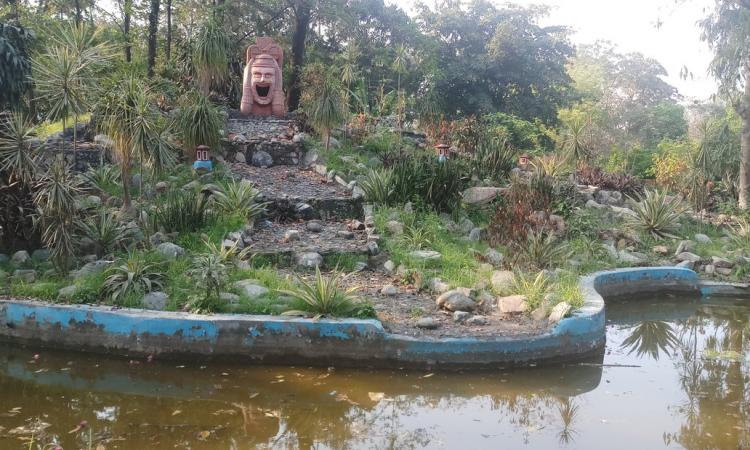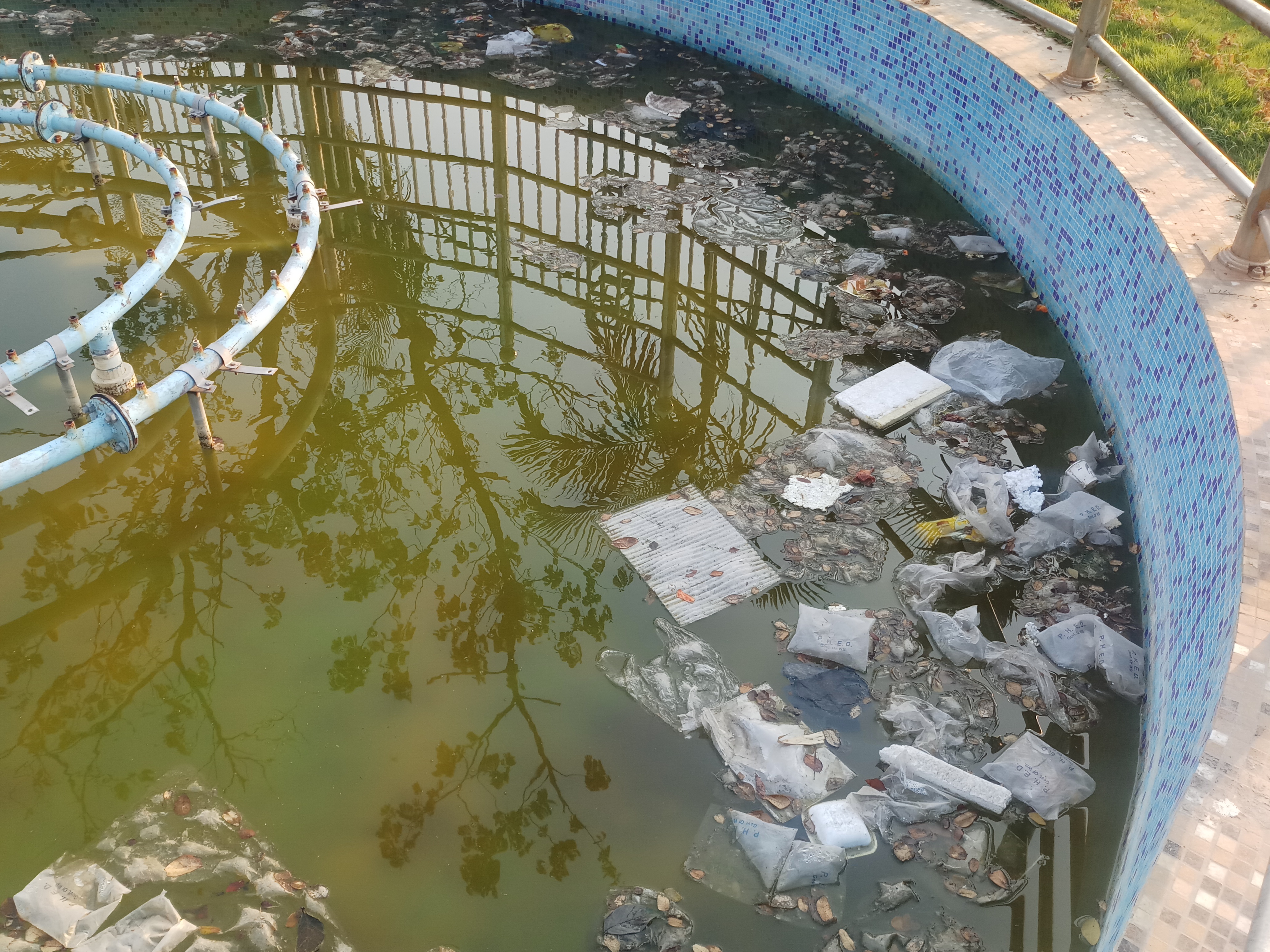
West Bengal’s tryst with dengue in 2017 could not have been more deadly. Around 13000 people were affected and nearly 100 people lost their lives to the disease. Among the worst hit was the South 24 Parganas district with every household having at least one person down with the mosquito-borne disease. So, the citizens cannot be blamed for going into a panic mode every time the possibility of another outbreak is suspected. This being the case, you would expect the state government to be on its toes, leaving no stones unturned to ensure another dengue outbreak is avoided. Unfortunately, that’s not the case. In fact, during the 2017 outbreak, the chief minister Mamata Banerjee initially denied dengue as the cause for deaths and blamed private labs for giving faulty reports.
Water fountains abandoned
Various parts of the city saw water fountains being installed as part of the beautification drive during the Calcutta Book Fair and Fifa U-17 held recently. Eight fountains--five in front of Central Park and three on the Broadway in Salt Lake area of the city--have stopped functioning with stagnant pools of water lying at the base and becoming a breeding ground for mosquitoes. It is obvious that these fountains have not been cleaned in a long time. People have begun to use them as garbage dumps which is only making the water filthier.
This is problematic since Central Park in the Salt Lake area is a favourite haunt of youngsters who throng here in large numbers every day. “We come here to spend some hours in the lap of nature as there is greenery around. But it is really disgusting to see that the fountains and the water bodies lying unclean,” says Ranjita Chatterjee, a college student who had come to visit the park. “The condition of some of the fountains suggests that they have not been cleaned in a long time. The administration seems to pay no attention to keep them clean even after the massive dengue outbreak recently that snuffed out several lives.”
The three fountains on Broadway, on the median divider opposite gate no. 3 of the Salt Lake stadium, fare no better. The Salt Lake is the hub of IT companies in Bengal with several thousands of people working here.
Apart from the Salt Lake area, another five to six water fountains have also been found to be not working and abandoned in Burrabazar, Bhawanipore and other areas of the city. Besides, some water bodies in Rabindra Sadan, Howrah and south Kolkata have also turned into mosquito “sanctuaries”.
Authorities to take action
The Bidhannagar municipal corporation (BMC) is in charge of the maintenance of the entire infrastructure that had come up for the FIFA U-17 World Cup and the book fair. The mayor of the BMC, Sabyasachi Dutta assures that immediate steps would be taken to clean the fountains and remove the stagnant water from them. "We have already taken up the issue on a priority basis and they would be cleaned soon. It is very necessary to keep them clean,” he agrees.
Significantly, the dengue-causing Aedes aegypti mosquito can breed in even coin-sized blobs of water and a pool measuring at least six feet in diameter is like a sanctuary for them.
The government claims to have organised awareness camps and sprayed medicines to prevent the breeding of mosquitoes but nothing has been much fruitful. Contesting these accusations, Atin Ghosh who is the member-mayor-in-council, Health, KMC says that sufficient arrangements are being made to prevent dengue from spreading on a mass scale. “We are doing mass programmes to create awareness. We have also directed the respective councillors of different wards falling under the jurisdiction to spray medicines and to keep their localities clean,” he says.
Dengue gets more dangerous
A recent news about the research report of the Indian Council of Medical Research (ICMR) rings alarm bells among citizens. The ICMR analysis of blood samples collected from the city and the rest of the places have indicated that Kolkata and Bengal are now prone to the more dangerous dengue serotypes II and IV instead of serotypes I and III, which have hitherto been more predominant in the region, and this may be the cause for the sharp spike in the number of dengue deaths last year. It has revealed that the prevalence of serotype II has jumped from 26 percent in 2016 to 73 percent in 2017.
Serotypes I and III, which were more common till recently, have slid sharply. Serotype I was responsible for 52 percent of the cases in 2016; it dipped to just 3.3 percent last year. Serotype III cases plunged from nine percent in 2016 to four percent in 2017, the report says.
“It’s true that serotypes II and IV are dangerous and particularly serotypes IV is severe and it has been already proven by many researchers over the years. It is the most virulent and raises mortality chances. Moreover, Kolkata residents have antibodies for the more prevalent strains 1 and III and not for the new ones. This means we have a lesser chance of being able to fight the virus. But we cannot ignore other serotypes also,” says a Kolkata-based virologist working with the state government requesting anonymity.
Dr Shanta Datta, the director of ICMR, in her response to India Water Portal’s query on this finding, however, termed it as a debatable topic.
She says that during 2017, the DENV 2 (serotype II-->80 percent) was the predominant serovar, followed by DENV 4 (serotype IV--<10 percent). “Association of clinical severity of dengue fever with the infecting serotypes is a much-debated topic. There are a few published reports, which claim such association, but no specific serovar has been identified consistently with severe dengue cases,” she says.
She adds that the severity of cases was observed mostly in the secondary dengue infections when infection with one dengue serotype was followed by infection with another dengue serotype.
A senior government health official aware of the report admitted that the findings are worrisome. “It’s true that a large number of people had dengue for a second time last year, which showed their immune system was not ready to counter the virus. A second attack is dangerous; but, with serotype IV triggering a platelet drop, the combined effect has been disastrous,” he says on conditions of anonymity.
Health experts point out that it is the collective responsibility of everyone to ensure cleanliness and that the municipalities cannot be solely blamed for the sorry state of affairs. “It is obvious that stagnant water could lead to the spread of mosquito-borne diseases such as dengue and chikungunya. The municipalities should ensure that the water bodies are cleaned regularly but it is also the responsibility of the citizens to not throw any waste material like water pouches around. Awareness campaigns should also be done regularly to keep people aware about the dangers of stagnant and filthy water,” says Dr Nishith Kumar Pal, professor in the microbiology department of Nil Ratan Sirkar (NRS) medical college and hospital in Kolkata.